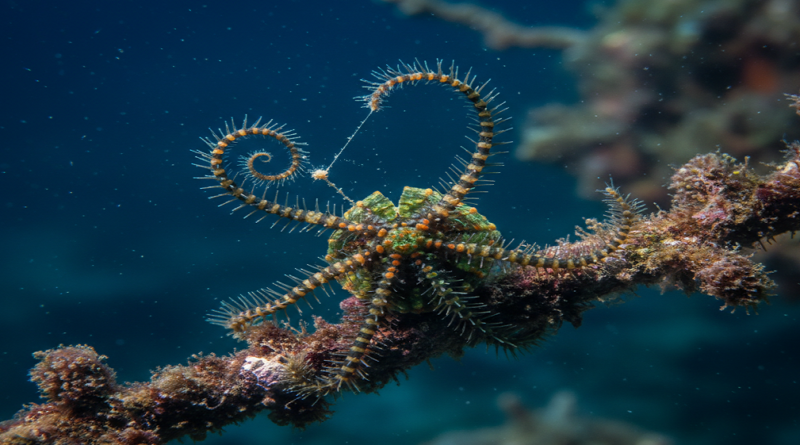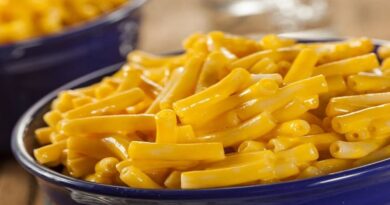How Do Brittle Stars Obtain Nutrition: A Comprehensive Guide
Brittle stars are another interesting category of carnivorous echinoderms that have developed extraordinary feeding behavior to survive in the sea. Their nutritional patterns can offer insight into how such creatures survive and their vital significance in the sea. This is an in-depth guide on how the different processes through which the brittle stars receive food and stay healthy in the oceans are achieved.
Introduction to Brittle Star Feeding
How Do Brittle Stars Obtain Nutrition are carnivorous echinoderms that rely on various feeding mechanisms to grow, reproduce and survive in general. These invertebrates in the ocean have evolved advanced systems to feed themselves, utilizing the food around them tailoring their feeding behavior according to the food source and the environment. The significance of sound nutrition in brittle stars extends beyond individual survival, as it has a direct influence on the dynamics of the population and the balance of the ecosystem.
How Do Brittle Stars Eat: Primary Feeding Methods
Scavenging Behavior
Scavenging is one of the most effective feeding methods used by the brittle stars. These cave dwellers feed on the decaying marine biological substances and on the carcasses of the sea floor. This scavenging habit is their major mode of feeding and enables them to exploit food sources that are easily accessible. In addition to sustaining individuals, this feeding process is important in nutrient recycling in the marine ecosystems, where complex organic substances are decomposed and nutrients are sent back to the water column.
Deposit Feeding and Particle Collection
Brittle stars deposit feed by gathering small particles and detritus on the seafloor. Their tube feet are so specialized as to be remarkably flexible and carry the particles along arm grooves and push them towards the mouth. This method is, in fact, practiced by such species as Amphiura filiformis, which feeds on benthic organic matter in a delicate and efficient way. This deposit-feed system enables the brittle stars to extract the nutrients from sediment-based food that otherwise could be ignored by other predators.
Suspension Feeding Techniques
Certain species of brittle stars use the suspension-feeding mechanisms where they use their arms to raise small particles and algae in the seafloor currents. These animals make use of mucus-covered structures to trap suspended material in the water. A specialization in feeding in this group is the basket stars, which are highly adapted suspension feeders, showing evolutionary adaptations to optimize the feeding process to suit particular ecological conditions.
Active Predation and Hunting
In addition to passive feeding processes, some brittle stars are active predators. These are carnivorous hunters that actively stalk and hunt with their limp arms. Other species, such as Ophiosparte gigas, demonstrate great predatory skills, including hunting of bivalves, polychaetes and crustaceans. Their arm tips have sensors, which help them to sense the prey effectively, giving them the sensory data they need to hunt successfully.
Anatomical Structures Supporting Nutrition
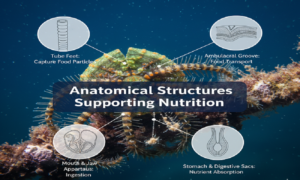
Feeding Apparatus and Oral Structures
The mouth of the brittle stars is central and is enclosed by five jaws found on the underside. These jaws are used in crushing and processing food, which is consumed and digested into small, manageable parts. This structural composition is an effective construction of a predator that lives on the bottom.
The Tube Feet System
The tube feet system deserves special attention in understanding how brittle stars feed. Unlike other echinoderms, brittle stars primarily use their tube feet for feeding rather than locomotion. These structures incorporate a sweeping mechanism that transports particles toward the mouth with remarkable efficiency. In filter-feeding species, these tube feet possess specialized structures with cilia designed specifically for capturing suspended food particles.
Mucus Production and Its Role
Brittle stars are mucus-producing animals that use this in their feeding behavior. This secretion aids in the capturing and retention of food particles thus it is very important in suspension feeding. Other than immediate capture of the particles, the mucus is known to help in the breaking of complex molecules in the digestive process, to help in the absorption of nutrients.
Digestive System Organization
The digestive system of brittle stars includes a short esophagus leading to a large stomach occupying the central disk. This stomach contains approximately ten stomach pouches specifically designed for prey digestion. This anatomical specialization allows efficient processing and absorption of nutrients from captured food.
Sensory Capabilities for Food Detection
Brittle stars possess remarkable sensory abilities supporting their feeding success. Touch-sensitive and chemoreceptive nerve endings throughout their skin enable detection of potential food sources through chemical sensing. Their arm tips demonstrate particular sensitivity to light and odor detection, allowing these creatures to locate nutritious food sources in their environment.
What Do Brittle Stars Eat: Diet Composition
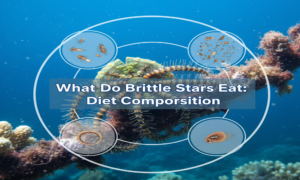
Animal Matter as Primary Nutrition
Small invertebrates, such as crustaceans and mollusks, are sources of protein to the brittle star carnivores. The dietary diversity of these predators has been recorded in research with at least 41 different small epifaunal and infaunal taxa having been utilized. Brittle stars are plankton, mollusks, and worms feeders, and sometimes fish predators, which vary in preferences depending on the availability.
Organic Matter and Detritus
Dead, decaying animal matter and macroalgal detritus comprise significant portions of many brittle star diets. These creatures also consume sediment particles and process “marine snow” from the water column, never allowing valuable nutrients to go unused. This omnidirectional approach to feeding ensures survival even when preferred prey becomes scarce.
Plant-Based Nutrition
Although they are mainly carnivores, there are species of brittle stars that show omnivorous behavior. Ophionereis reticulata feeds on algae as a nutritional supplement and Ophiopsammus maculata has been reported to feed on southern beech pollen. These food supplements are sources of much-needed nutrition that would not otherwise be obtained by predation.
Prey Selection and Size Preferences
Brittle stars are also selective in their feeding habits as they choose usual and accessible foods. They often feed on polychaetes, echinoderms, crustaceans and mollusks, especially on meiofauna, recently colonized larvae and small benthic macrofauna. One of the main effects of high prey density is the feeding occurrence of many species when they get the chance on a good supply of food, such as new bivalves.
Nutritional Requirements and Metabolic Processes
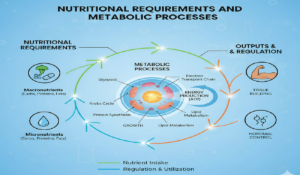
Essential Macronutrients
Protein is the nutritional element most important to the brittle stars, and it is mainly found in invertebrate prey. Carbohydrates supply the body with a lot of energy that is required for day-to-day activities and metabolic processes. Fats in the form of algae, plant foods and prey supplement their macronutrient needs, promoting hormone synthesis and cellular activities.
Micronutrient and Vitamin Needs
Brittle stars need vitamin A and vitamin E for several physiological functions. Their skeletal structure requires calcium and their enzymatic activity relies on magnesium and other minerals. Though these micronutrients are needed in smaller amounts compared to the macronutrients, they are also essential to optimum health.
Feeding Frequency and Portion Control
Brittle stars have slow metabolisms, so small frequent meals are advantageous to them. The experts recommend 2-3 times feeding per week in captive specimens. There are major risks that are associated with overfeeding and they include disruption of metabolism and malnutrition as an ironic consequence of poor digestion. This feeding pattern reflects their natural life at the bottom of the ecosystem,where they feeding is intermittent.
Ecological Role and Natural Feeding Patterns
Ecosystem Functions
Brittle stars play an important role in ocean ecosystems by recycling nutrients in order to scavenge, decomposing nutrients. They are predators, which means that they control the population of prey species, allowing the maintenance of the ecological balance. Also, they act as the food source to fish, sea otters and other echinoderms thus contributing to the food webs.
Temporal Feeding Behaviors
Most shallow-water brittle star species display nocturnal feeding habits, foraging actively at night while hiding under rocks or in crevices during daytime. Conversely, deep-sea species forage without photoperiodic patterns, adapted to the perpetual darkness of their environment.
Habitat-Specific Adaptations
These creatures prefer living on or in the seafloor, adapting their feeding strategies to crowded areas through suspension feeding and to sparse regions through active predation. Their versatile feeding strategy combines scavenging and predation, enabling adaptation to varying food availability throughout different seasons and years.
Environmental Threats to Feeding Success
Habitat destruction from pollution and coastal development threatens brittle star populations. Overfishing reduces prey availability in many ocean regions, limiting feeding opportunities. Climate change continues to affect physiological processes and reduce overall nutritional ability among these vulnerable marine organisms.
Conclusion
Brittle stars have exceptional nutritional plasticity in their several feeding approaches comprising of energy idleness to energetic predation. Their anatomical structures and sensory features are specialized that allow them to be efficient in obtaining their food in a variety of marine habitats. The knowledge of the ways in which brittle stars feed can help shed some light on the intricate relationships that are present in oceanic food webs and the reasons why these important echinoderms and habitats need to be preserved.
